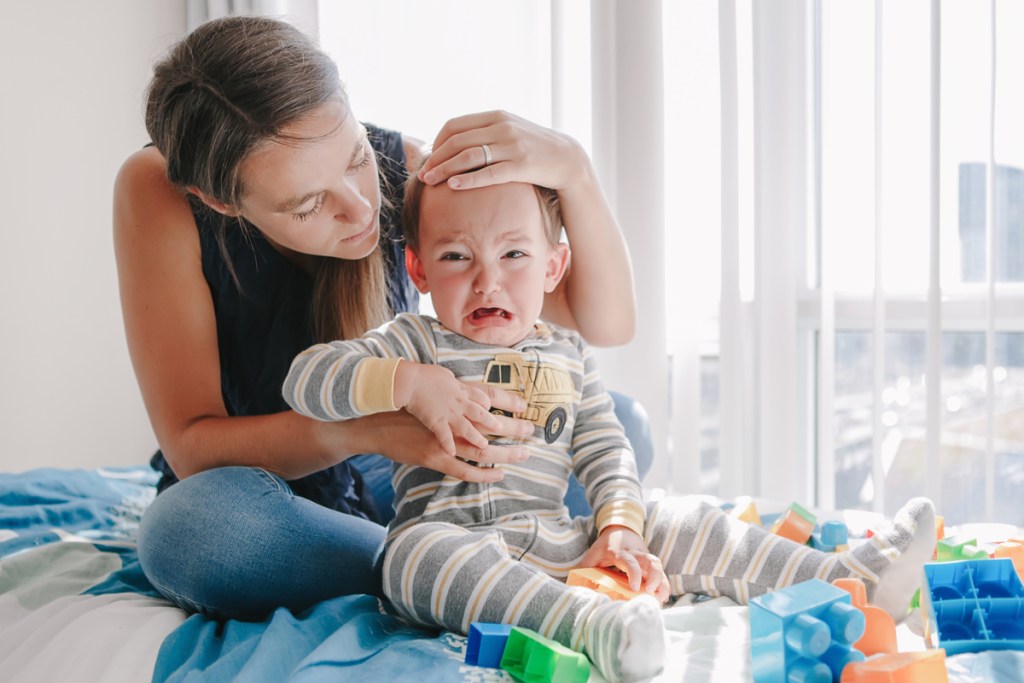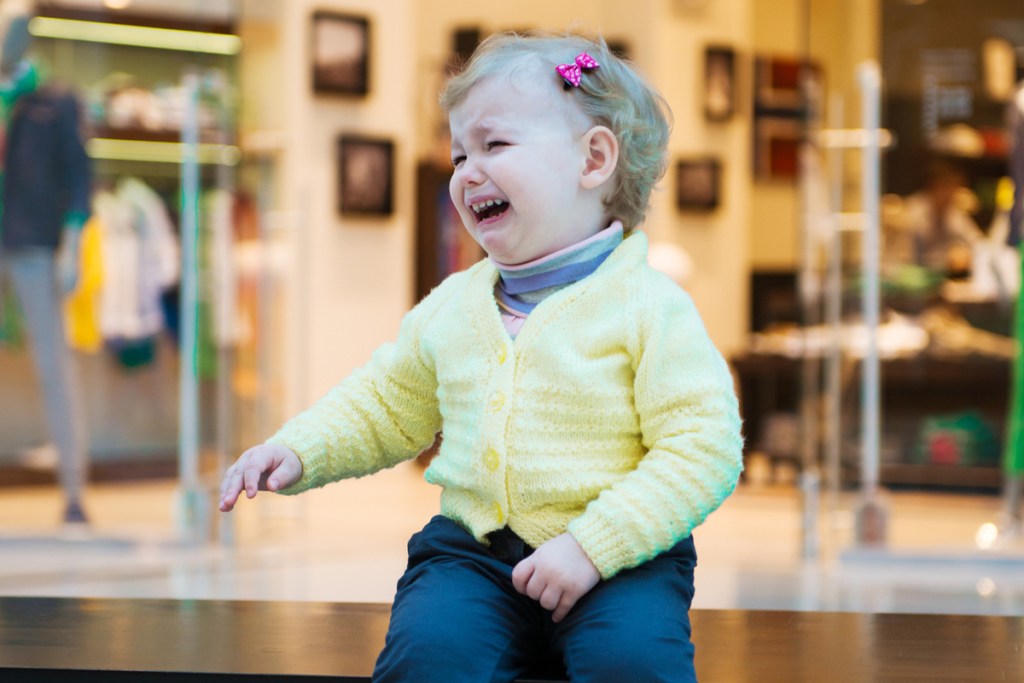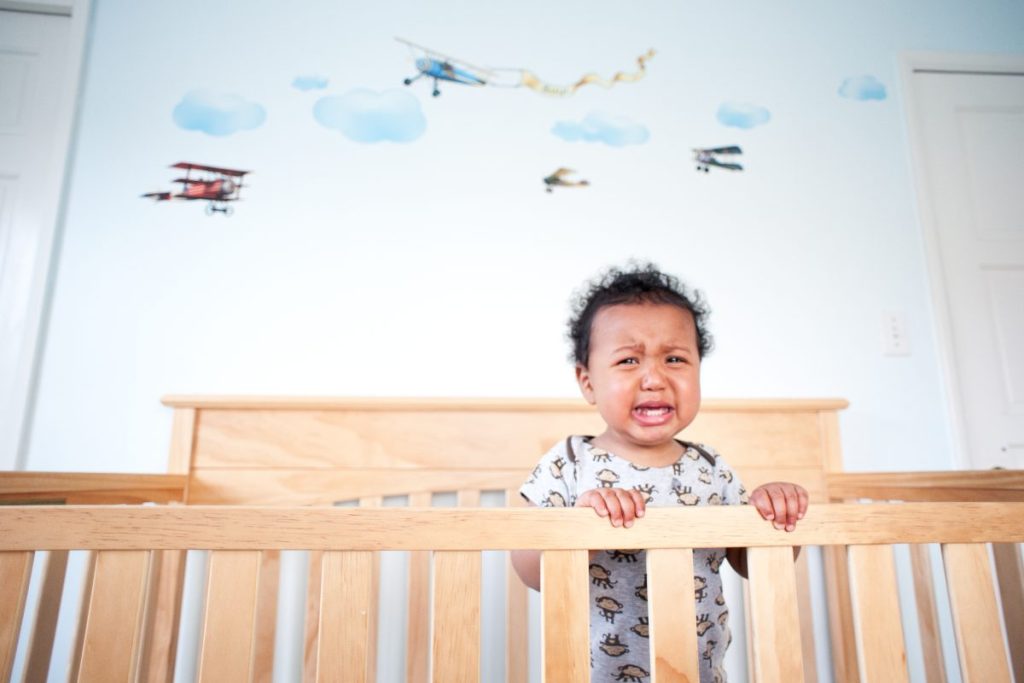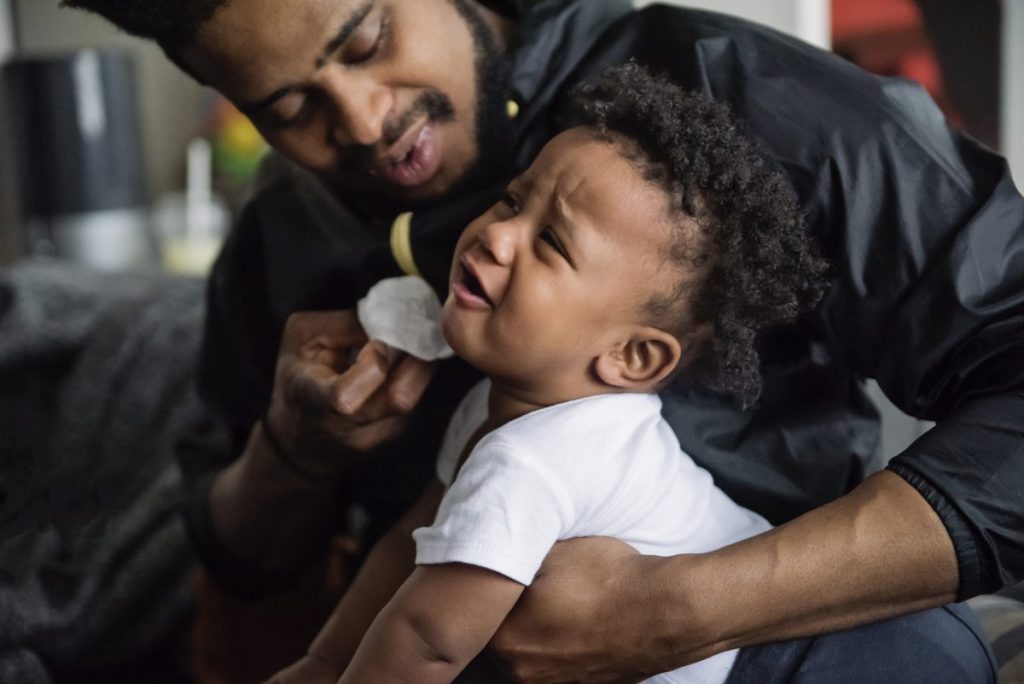There is nothing like being in the delivery room and hearing your baby cry for the first time. You know your little one has safely arrived and that those lungs work! Then your baby cries for just about everything, since it is simply the only way the know how to communicate. During those first few years, you learn to tell which cry means what. But, if your toddler's crying for no reason, there are a few approaches to take to solve the issue.
- Why toddlers cry for no reason
- Exposure to overwhelming stimuli
- Crying is an effective distress signal
- The child is exhausted and ready for a nap or bedtime
- The child wants attention
- Don't discourage crying
- When and how to address crying
- How to calmly deal with an emotional release
- What not to say to crying toddler
- If the crying doesn't stop, it might be something more

Why toddlers cry for no reason
To know how to make a child stop crying, it is important to understand why they cry in the first place. Crying is an important, if not crucial, part of grief. It is a healthy and normal way to show sadness. Crying also serves as a good physical release. Studies show that after crying, people have lower blood pressure. So, it's not all bad when your tot needs to get those tears out.
Remember, young children have a limited scope of the world, so things that seem trivial to an adult are actually devastating to a toddler. Children experience emotions as equally deep as those in adults. They may cry for a variety of reasons.

Exposure to overwhelming stimuli
Too many sensory stimuli is quite overwhelming because young children are still learning how to process and react to their environment. Too many sights, loud sounds, people they don't recognize, or anything else to create sensory overload causes children to feel frightened and unsure of how to act. As a result, they start to cry to feel more in control of what's going on around them.

Crying is an effective distress signal
Crying is a sign of distress. We've all stopped in a store and turned to look when we've heard a child scream out to make sure the kid was okay. When a child is in pain or afraid, they might begin to cry. This is a natural response that requires immediate attention, and at some point in your parenting journey, you’ll recognize the difference between the cry of distress versus the cry of disappointment or exhaustion.

The child is exhausted and ready for a nap or bedtime
Don't you still sometimes let a sob out when you are absolutely exhausted? A pretty sure giveaway reason your tot is crying is they’re merely tired. Sometimes, little ones can’t verbalize when they’ve had enough when they are just plain exhausted. Instead, they respond by shedding tears and acting like they’re fighting off the need for sleep. We fight the naps as a toddler and beg to have them back as an adult. It's the circle of life.

The child wants attention
You know your child is full, in a safe place, not overstimulated, and rested. So, why is your toddler still crying? It's possible they just want a little bit of attention. Younger children are still figuring out how to ask for a moment of your time. Instead of communicating what they need, they’ll simply start crying. Try a cuddle or ask to play a game with your child and see if they forget they were crying.

Don't discourage crying
While you can discourage crying, most psychologists suggest you should not. Although many people were raised with the idea crying is bad, in actuality, it isn't necessary to try to divert a child’s coping mechanism away from crying.
Crying is an act of healing, not one of pain, as a person who cries has recognized something negative has happened and is beginning to process that fact. Approaching your crying child with a kind and nurturing attitude helps them realize that it's safe to express themselves through tears.
Crying is a person’s first available mode to communicate with their caregivers. There are a number of readily apparent reasons for the behavior, like your child feeling hungry, wet, tired, or hurt.
As your child gets older, they should start to vocalize most issues they have instead of crying about them, as speaking is more concise and allows the problem to be addressed quicker, so they will want to talk to you.

When and how to address crying
For the most part, crying is standard for a child. But there are ways to address your child's crying when their behavior isn't acceptable. If they're crying, try to comfort them and address the reason for their tears by asking them what emotions they are feeling.
In some cases, a child may be crying as a way to act up to get a parent’s attention. If that's the case, there are some ways to address the behavior.
Step 1: Ignore and turn your back on the child (as long as it’s safe to leave the child be). Giving in to purely attention-seeking crying gives your child the idea that crying is an acceptable means of getting what they want.
Step 2: If they want attention to get a certain demand fulfilled, encourage better behavior by not complying.
Step 3: Avoid talking about the request while the child is crying.
Step 4: You may also let your child occasionally cry to teach them they don’t get everything they want right away because they cried for it.

How to calmly deal with an emotional release
Loud, screaming shrieks are an example of a time when crying should be dealt with immediately. Unlike attention-seeking behaviors, these should not be ignored. While these emotional scenes aren’t easy to fix, they could be prevented. Here are some ways to combat those dreaded toddler hysterics.
Step 1: Potentially decrease the number of tantrums thrown by your toddler by explaining to them prior to a difficult situation that if they start to struggle, you will gently put your hand on their head and offer to help them.
Step 2: Children don’t like having their autonomy interfered with, so telling them about plans will help them know what is coming. Kids love routine and they love to know what's going to happen, so talk it out with your toddler beforehand to avoid outbursts.

What not to say to crying toddler
Dealing with a crying toddler, especially one who seems to be crying for no reason, is frustrating. However, simply instructing your child to stop crying isn't the most effective way to get them to actually stop crying. Avoid telling them to "stop crying," or "don't cry," and don't be dismissive of their feelings. That just tells your child you don't understand why they're upset and have no interest in finding out.
“It actually doesn’t matter why they’re crying,” Dr. Rebecca Schrag Herhsberg, clinical psychologist and parenting coach in New York City, explained to Fatherly, adding it simply matters you take the time to ask them why they may be upset. Dr. Gene Beresin, agrees, adding, “It’s not about you. It’s about your child,” and “your first job is to take care of your child.”

If the crying doesn't stop, it might be something more
If you notice your child never stops crying, and you've checked off the usual suspects, there may be something else less fun going on. Your toddler could have an ear infection, an untreated cut or injury, or an illness. Your toddler could have a fever or be cutting a tooth. There are non-emotional reasons to make your tot cry that you won't be able to know or see by only looking at your kid.
Since your toddler probably can't describe any type of body pain or symptoms, you will need professional help. If the crying has been on-going and you have no idea why, make an appointment with the pediatrician to see if there is a medical reason why your toddler is seemingly crying for no reason.
Crying could definitely be annoying and frustrating at times, but it never lasts forever. By working with your child to assist them in communicating their needs, you will hopefully lessen the time they spend crying. That means a happier life for all involved. It may look like a toddler is crying for no reason, but there is always something behind the tears. A fun part of parenting is it's your job to find out what the reason is and cuddle and love it away, so your toddler gets back to conquering the world.
Editors' Recommendations
- Why do babies growl? Understanding your little one’s weird sounds
- Is your kid screaming for no reason? Here are ways to deal with a screaming child’s behavior
- How to relieve constipation in your toddler safely
- 6 reasons why all parents should let their kids have cellphones
- 7 avocado-based baby food combinations your baby will love


